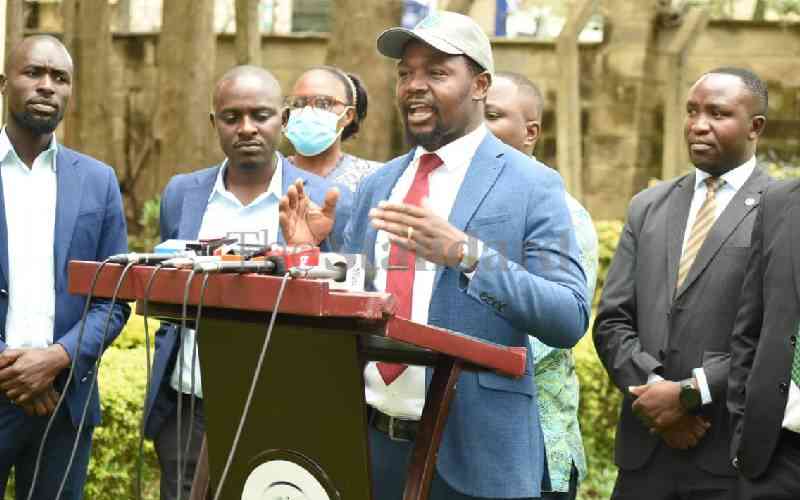What would it take for Isiolo to release its huge potential and take off economically?
At the start of the last century, what was a supply station for railway builders later became the capital city of Kenya; Nairobi.
By the completion of the rail line from Mombasa to Kisumu, Nairobi had replaced Mombasa as the capital of British East Africa.
Isiolo (and what is generally referred as the Nothern Frontier District faces similar prospects.
What with the construction of the $30 billion Lamu Port-South Sudan-Transport (LAPSSET) project.
The next few years will be instrumental for the region as it takes the leap from backwater regions to an economic hub.
No one doubts the promise that opening up the region holds.
Yet to tap on this great promise calls for more than optimism. The hard work is yet to be done.
There are many challenges that must be surmounted.
Setting up the capital and human capacity to handle the windfall from this and other Vision 2030 projects earmarked for the region is important.
Some of these include a resort city, an international airport and an oil refinery.
Endowed with abundant wildlife and beautiful flora and fauna, Isiolo's fortunes couldn't be any better.
When Costa Rica, a tiny South American country of about four million people, was picked as an investment destination by American tech giant Intel Corporation in 1996, it had to do everything right; from the time it cleared imports at its major port, to the provision of adequate security and a 60-second cycle electricity supply.
Moreover, in developing clusters to support the $300 million investment, Costa Rica set up a technology institute to train those who will work in the microprocessor assembly and testing plant.
It might look like a steep mountain to climb. To attract such investment portfolio, is a huge task, but is not entirely impossible.
Stay informed. Subscribe to our newsletter
Isiolo County and indeed the whole of the NFD can scout for investors the same way Costa Rica did.
That is not hard if the leaders mean business.
I have no doubt that the elected leaders of NFD mean business.
But this rosy outlook is obstructed by certain challenges.
To begin with, lack of adequate access to financial services is one of them.
Most inhabitants profess the Islamic faith and therefore have a preference for Sharia-compliant banking.
There are a few of those banks spread across the NFD region.
There is also the spiritual dimension, the nature of economic activity and lack of land ownership documents.
Unfortunately, the few Islamic banks in the country have targeted the main urban centres and prefer to serve people with established businesses excluding the vast majority of their potential customers.
With a nomadic lifestyle, most banks are averse to issuing loans to these people.
The practice in the banking industry is that loans are given to farmers who have documented and registered land.
The vast majority of land owners in Northern Kenya don't possess title deeds for their land.
For example, in Isiolo County, there are only 190 registered parcels of land mainly in Isiolo town, the main administrative centre.
This leaves more than 99 per cent of the people without any form of securely registered land.
In the past, access to Government funds like those extended through the Agricultural Finance Corporation and the National Housing Corporation facilities have been difficult.
Other benefits accruing from the LAPSSET project will be hindered because the region has generally been excluded from the development of infrastructure and other Government-funded services.
There are a few tarmacked roads in the region.
Those connected to the National Grid are far and between.
There is no tertiary institution in the region. The cost of maintenance of vehicles (the only means of transport) is exorbitant.
The area generally suffers from rampant cases of insecurity due to inter-clan fighting and cattle-rustling exacerbated by the porous Kenya-Somalia border.
The erratic rainfall and persistent drought makes a bad situation worse.
The access to the market for the mostly-pastoralist region is limited by lack of proper organisation in form of cooperative societies and the harsh climate.
These challenges will have to be tackled to transform a region of close to four million people.
So will Isiolo and the rest of the Nothern Frontier Districts take off or will the journey abort?
If in the end, the lives of the people of the region remain the same then we, the elected leaders will have failed them and the country.
 The Standard Group Plc is a
multi-media organization with investments in media platforms spanning newspaper
print operations, television, radio broadcasting, digital and online services. The
Standard Group is recognized as a leading multi-media house in Kenya with a key
influence in matters of national and international interest.
The Standard Group Plc is a
multi-media organization with investments in media platforms spanning newspaper
print operations, television, radio broadcasting, digital and online services. The
Standard Group is recognized as a leading multi-media house in Kenya with a key
influence in matters of national and international interest.
 The Standard Group Plc is a
multi-media organization with investments in media platforms spanning newspaper
print operations, television, radio broadcasting, digital and online services. The
Standard Group is recognized as a leading multi-media house in Kenya with a key
influence in matters of national and international interest.
The Standard Group Plc is a
multi-media organization with investments in media platforms spanning newspaper
print operations, television, radio broadcasting, digital and online services. The
Standard Group is recognized as a leading multi-media house in Kenya with a key
influence in matters of national and international interest.






